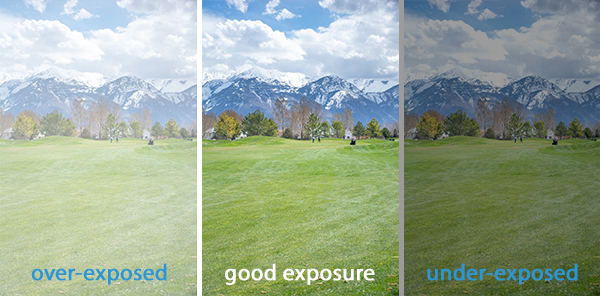High-quality photos are essential for a strong social media presence, but getting those photos isn’t always easy. This article takes you through the basics of mobile phone photography so you can take your course or club’s social media marketing to the next level.
High-quality smartphone photos are crucial for an effective social media presence, but it can sometimes be hard to get a photo that’s good enough to share it with the world. This article outlines the basics of technique and composition that will turn your feed from grainy mediocrity to gallery-worthy influencer.
Technical Details
Clean the Lens
This may sound like an overly obvious piece of advice, but it’s surprising how many people overlook this when they take a photo on their smartphone. Even a single fingerprint or a mote of dust on the lens can cause the picture to blur, giving it a hazy, unprofessional look.
You can easily clean your lens with the same cloth you use to wipe your glasses, or even a soft cotton tee shirt.
Set the Focus
Most smartphones have an auto-focus feature, which is generally very good at identifying the main focus of the image. However, it’s not perfect, so it’s always safest to set the focus yourself. This is extremely simple; all you have to do is tap on the subject you want to focus on, and the camera will adjust itself.
Set the Exposure for Perfect Brightness
On smartphones, photos often turn out to be too bright (over-exposed) or too dark (under-exposed).
Fortunately, this is just as easy as setting the focus. In fact, it happens at the same time! When you tap on the screen to focus, if you keep your finger on the screen, an icon on a vertical bar will appear.
Simply slide up or down to make the photo brighter or dimmer.

Avoid Digital Zoom
We’ve all seen one too many pictures like this on Instagram:
It’s an interesting sculpture, but it just looks so bad. Even though almost every cell phone camera comes equipped with digital zoom, very few are effective. Unless you have a smartphone with a telephoto lens, just step a bit closer to the subject.
Keep It Steady
Another culprit of blurry photos is a shaky hand. The hard thing is that it doesn’t take a lot of movement to make the photo out of focus; even a small shake for a fraction of a second can ruin it.
The best way to avoid this is to steady your hand on something, like a railing, rock, or your friend’s shoulder (seriously!), or invest in a tripod, which can be incredibly inexpensive.
Master the Use of HDR
Sometimes it seems impossible to get a good photo out of a high-contrast scene—one where there are both very bright and very dark areas. Thankfully, most phones come equipped with a setting to compensate for this. It’s called HDR, which stands for High Dynamic Range.
Essentially, the camera takes three photos: one that’s over-exposed, one that’s under-exposed, and one at normal levels. Through some software magic, those images are combined into one photo that gets one beautiful, evenly-lit makeover.
On Android phones this appears as an option at the bottom of the screen in the Camera app, but on iPhones it can be a little trickier to find.
On most iPhones, the camera automatically decides when to use HDR, which means that sometimes it might not detect when you actually need HDR.
To make HDR always available, open the Settings app from the home screen, and select Camera.
Turn Smart HDR (Auto HDR on older iPhones) off. If it’s on, you won’t have the HDR option in the Camera app.
Also turn on the Keep Normal Photo to make sure that your phone saves a non-HDR version of the photo.
Composition
Rule of Thirds
You may have seen grid lines on your phone’s camera and wondered what they are:
Those lines are there to help you create a beautiful photo, following the Rule of Thirds. The “rule” states that the main subject should be off-center and touching the lines of the center square. Sound confusing?
It’s not, really. All you have to do is make sure your subject is touching the lines of the central square. In the picture above, the photographer has aligned the golfer with the right vertical line.
When taking photos on your smartphone, it isn’t as important which of the inner lines you choose as that you do choose one. When filming or taking pictures of people, you generally want their eyes to be on the upper line:
Turn People Toward the Light
When someone sees a pretty sunset they think, “It’s beautiful! Take a picture of me standing right in front of it.” This nearly always ends up with their face being too dark and shadowed. The same thing happens when someone is placed in front of a window or any other form of light.

Instead, try turning them toward the sun or a window. You can see that the photo on the left is slightly hazy and shadowed. In the image on the right, she is turned toward the window which gives her a nice catchlight in her eye and the picture is bright.
Use Different Perspectives
When you’re taking pictures of people you generally want to shoot from chest height, but for that perfect shot of the course you can experiment with different angles and perspectives.
For example, try lying down on the ground if you want to emphasize something in the foreground, like a grassy hill or a beautiful flower bed. Stand over a bunker and take a picture looking directly down, with just the edges visible so that it’s hard to tell what you’re looking at.
This kind of artful interpretation can gain you a huge following on Instagram, where people are constantly on the hunt for stunning visual content.
Use Leading Lines
A leading line simply a geographic feature (a long green, a rock outcropping, a water feature) that leads all the way from the foreground to the background of the image.
Golf course photography doesn’t make a huge use of leading lines, focusing more on stunning aerial shots and focusing on flagsticks on vibrant backgrounds. While these are beautiful, leading lines are a much more powerful and visually compelling technique that will set your course’s photography apart.
Start Small
The suggestions in this article are a collection of advice from golf photography experts. They’ve devoted their lives to creating these kinds of photos, so if you don’t turn out an Ansel Adams-worthy shot of your course on the first try, don’t worry. Implement one technique at a time, and pay close attention to how the quality of your shots improves in the coming weeks. Your social following should grow, too!
The most important thing to remember is that everyone starts somewhere, and if you’re starting from an entire library of blurry photos of your dog, that’s ok. Give it time and practice, and before you know it you’ll be taking photos like a pro.
